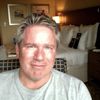It is the beginning of July and time for the Festival de San Fermin. You would know it as the running of the bulls in Pamplona. Generations of Americans have made the trip to see the encierro, to participate in the festival, to drink and dance the night away in the streets, to stand on the battlements of the city wall and watch the sunrise, and, some, to run with the bulls.
Several years ago MTV covered the run with MTV style: excited announcers, over the top color commentators, all dressed in MTV versions of the traditional white and red of Navarre. They tried to cover it as if it was a Real World knock off by way of Spring Break in an ocean-less Cancun.
But, it was Spain, and it was a bit too real.
Interviews before the run with drunken Americans, mostly college age, followed familiar interview protocols: high fives, knuckle bumps, and f-bomb bleeps while spraying wine from newly bought botas.
Then the cameras backed off and showed the encierro.
MTV would interview the formerly high-spirited runners...it was hilarious. Kind of like interviewing disaster survivors. Like trying to talk to Confederates after Pickett's Charge or people walking out of Cyrus. Stunned, incoherent, trembling. "What do you think?" a cheery announcer would ask a face dulled by absolute fear.
"What do I think?"... life would come back to the thirty year old with the Cubs cap worn backwards and the Umphrey's Mcgee t-shirt, realizing that he had survived in body, if not mind. What do I think? His voice strangled, a voice coming from some unknown part of, until ten minutes ago, a comfortable life.
Some would actually grab the microphone from the MTVer and look straight into the camera. Don't come here they would cry! You can get killed! It's so scary. Don't do this! Do you think this is funny? They would yell at the announcer...You have to tell them!
Some seemed positively Michael Behn-ish talking about the Terminator.
The interviewer would make frantic cutting motions across his throat to the producer. After a few years, they gave up.
I went to Pamplona because of Ernest Hemingway. Almost everyone who has ever read The Sun Also Rises has dreamed of Bret Ashley, the lost generation, and the encierro. It was sort of a test to an untested life.
The first time I took a slow train from San Sebastian to Pamplona, arriving at the train station as if visiting Paris the day before the Nazis arrived. Hundreds of what seemed to be refugees lying about the grounds of the station. Crowding every departing train, fighting for space.
It was the third day of the festival, and some had had enough.
I spent the day drinking in bars and eating pintxos. Rollicking with Australians and Germans and Argentines. I threw my backpack and sleeping bag under a tree near a river close to the bullring and went into the old city. At night it was a combination of Mardi Gras and New Year's Eve. Bands parading around playing as loudly as possible, surging throngs of Basques in all white with red neckerchiefs, talking and laughing and hugging everyone they came across. Restaurants packed and so noisy with merriment that you could shout to the person next to you and not be heard.
This went on all night. At dawn it was traditional to go to the city's walls and watch the sunrise. Then those who would run began clustering in the streets for the encierro. In later years I would discover that there were traditions and traditional parts of the run the demanded certain behaviors, but, this first time, I stood with a mass of young men and waited for the bulls.
A rocket went off and some began running immediately for the bullring. Others waited. For what I wondered? Soon the crowd surging past us thickened and fear became palpable. Someone grabbed me and yelled let's go. As I turned to run, a glut of runners crying toros aqui trampled everything in their path. I was hit as if by a blocking guard and almost went down. I looked back and for the first time in my life saw a fighting bull. Not a cow, or the bull in your uncle's pasture, but a Spanish fighting bull. Bulls from special ranches, bred for centuries to fight and die in the ring. Bulls with sharp wide horns, a moving wall of muscles, if separated from the oxen, deadly.
My protection was a rolled up Diario de Navarra, the local newspaper. I had been told the night before that if I was ever in danger of death to wave the paper in front of the bull's eyes. Depending on the news of the day, the headlines might be interesting enough for him to be distracted from goring me by reading the lead story.
The bull snorted at the news of a water tax and his horn missed me by a column inch.
It was the first and last time that reading a book almost got me killed.
Hemingway wrote of bull fighting in Death in the Afternoon in a way that almost makes you forget the cruelty. He wrote of the running of the bulls in Pamplona in The Sun Also Rises in a way that encourages you to find a way some July to stand in Santo Domingo in white pants, a white shirt, a red neckerchief. To wait for the bulls with that morning's Diario rolled in your hand, with that Spanish commitment to courage in the face of death, waiting, of your own free will, for that moment that can change your life. Waiting for the rocket to go off.
MTV won't save you. The new iPad means nothing. You'll never feel so alive at eight o'clock of a July morning, being close to the horns.
